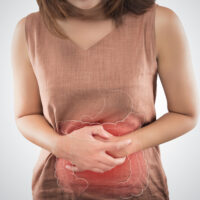Health Insurance – Why do you need It
With the inflating cost of hospitalization, medical care, and medicines, not having health insurance can strain your finances and savings. While expensive premiums may deter you from investing in health insurance, it leaves you severely underprepared when a medical emergency strikes. With the right health insurance cover, you can access the medical facilities and treatments for you and your family, without worrying about its cost.

Importance of medical health insurance
Health insurance not only gives you access to top-notch hospitals and medical facilities in the country, but also bears the exponentially high cost of medical expenses, which can be financially strenuous. Additionally, it makes you self-sufficient, prepared for trying times, and ensures that you only need to focus on improving your health and not worry about medical expenses. Moreover, opting for the right health insurance, helps you access a number of other minor health facilities such as dental care, skin care, and eye care. Moreover, health insurance prepares you for the rising cost of medical expenses, without stressing your finances via affordable premiums.
There are several reasons to invest in health insurance that covers you and your family.
1. To prepare against different lifestyle diseases
With the hectic lifestyle that is prevalent in today’s times, there has been an unprecedented rise in the number of lifestyle diseases. This is particularly common in people below the age of 45 that are highly susceptible to multiple illnesses such as heart disease, diabetes, and respiratory problems. With today’s sedentary lifestyle, constant exposure to rising pollution, unhealthy eating habits, stress, and lack of exercise, the younger generation needs to invest in health insurance to ensure that they are not caught off-guard if any health crisis arises.
2. To protect your family
Most health insurance companies now offer combined plans at affordable premiums that protect both you and your entire family, without burning a hole in your pocket. Moreover, health insurance companies allow you to choose and alter your plans to cover any prevalent ailment you, your spouse, kids, or parents may have. This ensures that no matter who in your family needs urgent medical attention at any moment, they can access the best medical or testing facilities in the country, without worrying about expenses. However, to ensure that you get the best health insurance plan that covers all your family members, research and compare health insurances that are available in the market. You can also take advantage of an online consultancy to decide which insurance plan fits your needs better.
3. To counter an insurance cover, which is inadequate
Usually, you may already have a health insurance policy from your employer. However, most of the time, this policy only provides you with basic coverage and does not cover your parents or any additional relative you want to add. You can simply counter the shortcomings of this insurance by investing in a new one that adds to the sum insured and provides you better coverage. Moreover, this additional coverage will have minimal impact on your financial situation, and have a larger sum assured coverage. Remember to opt for a health insurance plan that provides ample coverage for you and your family. Moreover, opt for a health insurance provider that is tied-up with prominent hospitals and health facilities in your locality to access cashless transfer and even discounted rates.
4. To better deal with the inflation in the medical expenses
While the number of ailments and diseases has increased over time, there has been a perennial improvement in medical technology to combat them. However, the cost of these special and newer treatments and medical technology is certainly very high. Moreover, medical expenses do not stop at simply treatment, it includes hospitalization fees, charges for the battery of tests conducted, room rent, doctor’s fee, operation theatre fees, and cost of medicines. The price of all of these has been surging every year and a medical emergency now can put an unrecoverable strain on your finances if you do not have health insurance. However, just by investing in health insurance, you can protect yourself and your family at an affordable annual premium. Moreover, you can access the best medical facilities, ensuring that there is no stone unturned in guaranteeing speed recovery.
5. To not consume all your savings
A medical emergency, no matter what, takes a toll on your physical and mental health. Moreover, if you do not have health insurance, then you may constantly worry about the expenses incurred, which will add more stress to your already fragile physical and mental state. However, with the right health insurance plan, you can manage your medical bills and treatment without exhausting all of your savings. In addition to the affordable yearly premium, most insurance providers offer cashless transactions, completely relieving you from the stress of managing and authenticating your medical bills. Also, with the money saved, you divert these savings to your other long-term goals such as buying a house, financing your child’s higher education, traveling, or simply investing it in your retirement. Furthermore, health insurance plans also provide you with multiple tax benefits, helping you increase your savings even more.
6. The secure your future
When you opt for insurance early on in life, you get much better benefits. It is so because you are healthier and younger. As a result of this, you get health insurance that covers most prominent diseases in your later years at a lower premium. The longer you wait to get health insurance, the higher will be its premium. Also, it will not cover most diseases that you are highly susceptible to with age.
Tips to help you pick the right health insurance for your family
While looking for health insurance, your primary objective should be to get a plan that provides comprehensive coverage to you and your family with a high sum insured. However, this can be a daunting task, given that there are innumerable health insurance providers in the market. Moreover, going through multiple different types of policies, understanding their core benefits and features, and finding out about the inclusions and the limitation can be overwhelming. Some tips can ease this important task and help you pick the right health insurance plan with comprehensive coverage.
1. Go with the one that gives you comprehensive coverage
Now, the first and the foremost thing that you need to look for in a health insurance plan is the coverage it offers. Ensure that it covers every possible charge such as ambulance charges, both pre-and-post charges of hospitalization, maternity benefits, cover for any critical illness, in-patient hospitalization, cashless treatment, along with the coverage for a myriad of moderate to serious health conditions. When buying health insurance for family, you need to be particularly careful that the chosen insurance is good enough to cater to the specific needs of the member. Look through and compare different policies, compare their prices, and check the inclusions and limitations of each. Carefully read the fine print, as at times, a few policies have some hidden aspects, such as the waiting period and sub-limits, that can catch you by surprise while paying the premium. Do not sign anything without thoroughly going through the terms and the conditions. Most importantly, ensure that the insurance has a smooth and hassle-free claim process so that you or any of your family members do not have to go through unnecessary iterations of application and documentation.
2. Flexibility of adding new members
When you invest in health insurance for a family member, ensure that you can add a new member to your plan easily, without shelling out any additional money. This will especially come handy when a senior family member is no longer eligible for health insurance coverage. Conversely, also if you marry or have kids, the flexibility of adding new members to the plan will help you cover all the ensuing medical expenses. Moreover, if you purchase health insurance from the same provider, you can enjoy discounted premiums or avail of additional facilities and offers.
3. Figure out the waiting period, if any
In most cases, health insurance plans cover maternity expenses, pre-existing diseases, as well as a few other specific treatments, such as varicose veins, hernia, and more. However, you become eligible for these only after a waiting period of about 2 to 4 years, which usually varies from one plan to another. For instance, certain policies cover maternity expenses only after about 2 to 4 years from the date of purchase of the policy. Therefore, you need to check the waiting duration, after which a particular disease or a pre-existing condition will be covered by the plan. To ensure that you are not left in a lurch, in case of a medical emergency, invest in health insurance that has a minimum waiting period.
4. Analyze the co-payment clause
The co-payment clause states the claim amount that you are eligible to pay. Anything, over and above this amount will be covered by the insurance companies. For instance, if a policy has a 10% co-payment clause, then for a claim for $500, you’ll have to shell $50 from your pocket. The insurance company will bear the remainder of $450 of the claim. However, you can avoid the co-payment clause altogether by investing in health insurance plans that do not have any co-payment clause.
5. Opt for a plan that has lifetime renewability
The lifetime renewal clause saves you the hassle of switching over to new health insurance when your current health insurance expires. This way, in your later years, when you will rely more on accessing the benefits of your health insurance, you are not stuck comparing and investing in new health insurance. For instance, if your health insurance plan gives you renewability to 45 years of age, then you’ll have to buy a new plan once you surpass this age. So, this certainly means that you’ll have to bear an additional cost. On the other hand, if you buy a plan that has lifetime renewability, then you can continue with this plan for your life without restrictions. Moreover, as you grow older, the number of health insurance that provides comprehensive coverage drastically reduces. The available ones do not promise complete coverage or even sufficient sum insured even for a high premium.
6. Check limit on room charges
Opt for health insurance plans that offer you a higher limit on hospital room rent. Therefore, in case you are ever admitted to the hospital, you do not need to worry about taking a private room, given that it is covered by your insurance. Some health insurance policies set a limit on the number of days the policy covers the room rent, while some set a limit on their coverage of the room rent. For example, some insurance providers cover room charges only for a certain number of days, while others just cover a certain amount of the room charge. Moreover, these conditions also depend on whether you get a shared room, a semi-private room, or a private hospital room. To get the best medical assistance possible, it is advisable to opt for a health insurance policy that provides maximum coverage for room rent.
Bottom line
Multiple healthcare insurance providers in the country offer a myriad of healthcare insurance policies. Follow these tips, to ensure that you choose the right health insurance policy that provides comprehensive coverage to you and your family.





